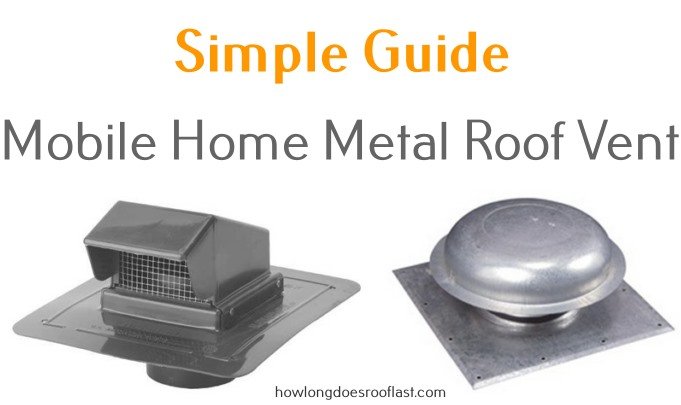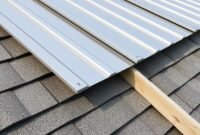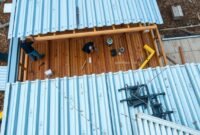Do mobile homes with metal roofs have unique ventilation requirements or condensation issues? The short answer is “no”, but other factors are at play.
There are three reasons why a mobile home metal roof vent is crucial for any mobile house, regardless of the kind of roof, unless it was constructed expressly not to require it.

3 Considerations for Proper Mobile Home Metal Roof Vent
- Efficiency in energy
Heat is expelled through ventilation during the summer to reduce the cost of air conditioning. While experiments have shown that proper ventilation, which quickly takes any accumulated heat back out of the mobile home, is as beneficial at improving house energy efficiency, if not more so, reflecting or “cool roofs” are still a good idea.
- Condensation
Additionally, an adequately aired mobile home keeps the insulation dry. Insulation loses a significant amount of R-Value and efficacy when it absorbs moisture. According to the standard formula, R-Value decreases by 2.5 percent for every 1 percent increase in moisture content.
- Ice Dams
The best roof vents for mobile homes can reduce the risk of winter ice dams for residences in northern regions. When warm air from the living area enters the roof deck and melts the snow, ice dams form. The melted snow drips from the roof flow under the house’s chilly overhangs and refreezes.
How to Install a Vent in Mobile Home Metal Roof
Adding a vent to mobile home roofing can be done following typical roof installation steps. Are roof vents needed on mobile homes? Installing a vent on a mobile home roof offers several benefits. The measures, equipment, and supplies required for this project are explained here.
- Step 1: Scale the Roof
The first thing to do on installing roof vents for manufactured homes is to remove the old shingles from your roof. You will need a ladder that is tall enough for you to climb up there effortlessly. You should check this ladder to ensure it is sturdy enough to support your weight and enable you to complete this work.
You’ll need a hoe or shovel to remove the roofing materials, so climb the ladder and go up on the roof.
- Step 2: Disassemble the Roof
Remove the roofing material by hoeing or using a shovel—exercise caution when working near the roof’s edge to avoid harming yourself or others. While working, you should wear safety glasses since much-flying debris will come your way.
- Step 3: Take Out All the Loose Material and Nails
You must remove all loose nails and other things on the roof while on your knees. This time-consuming, complex operation calls for meticulously inspecting the whole roof. Place the open items in the trash can.
- Step 4: Set Up Tar Paper
You are almost at the end of installing your metal roof vent. Now, spread tar paper around the roof. It will serve as a stopgap to prevent water leaks through the roof. Attach the tar paper to the roof with a staple gun.
- Step 6: Attach the Vent and Roof Shingles
Attach the Gambrel roof shingles to the roof by working in rows. You should be able to nail the shingles to a nailer strip that you laid over the tar paper since the shingles should have a lip or other attachment that will allow you to do so. Before beginning the following row, gently connect the previous row.
Bottom Line
Typically, the demand for a mobile home metal roof vent is neither increased nor decreased by a metal roof. Regardless of roofing material, ventilation that complies with code standards is sufficient. Talk to your contractor if you believe your house may be on the verge of having condensation and moisture management problems.


